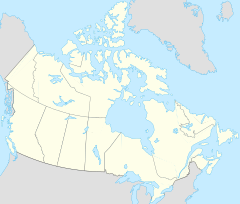Whooping Crane Summer Range facts for kids
Quick facts for kids Whooping Crane Summer Range |
|
|---|---|
| Location | Alberta and Northwest Territories, Canada |
| Area | 16,895 square kilometres (6,523 sq mi) |
| Governing body | Parks Canada |
| Designated: | 24 May 1982 |
| Reference #: | 240 |
The Whooping Crane Summer Range is a very large natural area in Canada. It covers about 16,895 square kilometers (that's a huge space!) across northern Alberta and the southwestern Northwest Territories. This special place is mostly made up of wetlands, which are areas where the land is covered by water, like marshes and bogs. It also has streams and ponds.
This area is super important because it's the only natural place where the endangered whooping crane lives and builds its nests in the summer. These cranes are very rare birds.
Contents
Why This Place is Special
The Whooping Crane Summer Range is recognized as a "Ramsar wetland of international importance." This means it's a wetland that is very important for nature and wildlife around the world. It was given this special title on May 24, 1982. It's one of two such sites found within Wood Buffalo National Park.
Who Looks After It?
The land is owned by the government of Canada. It's managed by Parks Canada, which is like the park rangers for Canada's special natural places. They work with another group called Crown–Indigenous Relations and Northern Affairs Canada to help take care of the area. Most of this special wetland is inside Wood Buffalo National Park, but a small part of it is outside the park, still on government land. It's also known as an Important Bird Area, which means it's a key spot for many different kinds of birds.
Protecting the Whooping Cranes
Whooping cranes are an endangered species, meaning there are very few of them left in the world. In 1941, scientists counted only 15 whooping cranes that migrated. Today, thanks to protection efforts, about 178 migratory whooping cranes spend their winters and breed along the coast of Texas, mainly at the Aransas National Wildlife Refuge.
Keeping Them Safe
Because these birds are so rare, the nesting areas in the Whooping Crane Summer Range are very protected. Only scientists and park staff are allowed to visit these sensitive spots. Also, low-flying aircraft are not allowed in the area. This helps keep the cranes safe and undisturbed while they are nesting and raising their young. The Canadian Wildlife Service regularly checks on the crane population to make sure they are doing well.
Nature's Way
This wetland area has been shaped by natural events, including wildfires. Because of this, natural forest fires are usually allowed to burn in the area. They are only put out if they threaten buildings or if they might spread outside the boundaries of Wood Buffalo National Park. This helps the ecosystem stay healthy and natural.


